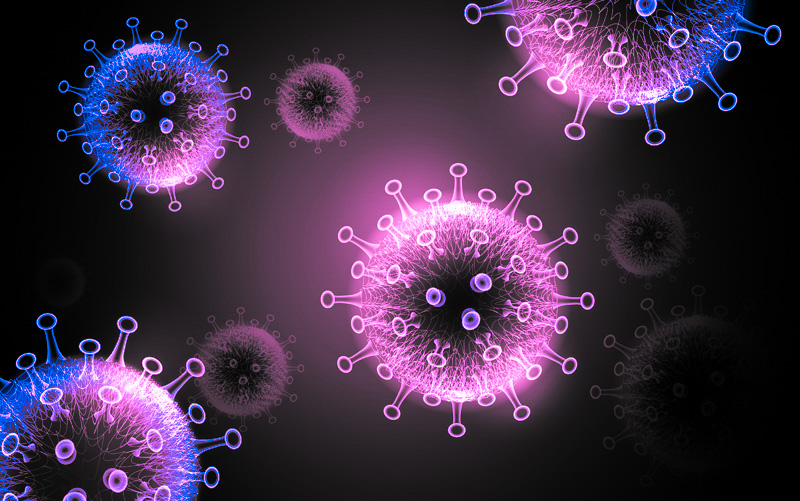More SARS-CoV-2 Variants

More than 3500 SARC-CoV-2 variants are known worldwide. However, some variants have made headlines around the world due to their ability to cause severe infections and render conventional treatment strategies ineffective in some patients. The CDC is monitoring at least 10 variants. We take a look at the available information on some of these variants.
The Alpha Variant
This is the lineage B.1.1.7 of the virus which was first discovered in the UK in November 2020. It was labelled a Variant of Concern (VOC) in February this year. It has estimated to be up to 80% more transmissible than the wild type version of the virus, similar to the beta variant thatwe reported about earlier. The variant has E484K mutation, which has been suspected to reduce vaccine effectiveness Later reports have confirmed that the virus is associated with a higher death ratein the UK. It has spread to over 165 countries as of August 2020.
The Delta Variant
The Delta SARS-CoV-2 variant - also known as the B.1.617.2, G/452R.V3, 21A or 21A/S:478 variant – is one of the fastest spreading coronavirus variants, having spread to 185 countries, Researchers have been reporting that is becoming “more fir for infection” that it slowly replacing other variants in human patients. It’s ability to spread faster than the original variants made it notable as a variant of concern (VOC-21APR-02) in May 2021. The spike protein carries in this variant carries L452R and P681R (which acts as a pre-activating mechanism for SAR-CoV-2 virus particles) mutations, as well as the T478K mutation. The T478K mutation, represents the exchange of the non-charged amino acid threonine with the positively charged lysine at position 478 and roughly encompasses amino acids 350 to 550 of the SARS-CoV-2 spike protein. This change in amino acid composition affects how the virus interacts with the spike protein-ACE2 binding complex and is also believed to assist the variant in evading specific immune responses, which allows it to multiply further in human hosts. A South Korean study also showed the patients infected with the Delta variant also had 300 times higher viral loads than those seen in patients infected with the original strain. The good news is that this amount gradually decreases over time - to 30 times in four days and over 10 times in nine days matching levels seen in other variants after 10 days, which suggests that the immune system can manage to combat the virus. Recent reports also indicate that fully vaccinated persons who contract this variant remain mostly asymptomatic New mutations such as K417N have also been discovered, but virologists say that more data is required to label these mutations as concerning.
The Kappa Variant
This variant is B.1.617.1 is from the same lineage as the Delta variant. It lacks the T478K mutation but does have the L452R and E484Q mutations. Like the delta variants, biophysical simulations of its spike protein show a greater binding affinity to the human ACE2 complex in comparison to the original strain which stabilizes the chains and interactions between the viral spikes and the ACE2 complex. Research shows that mutation in the L452R side chain of the RBD in the S protein of the kappa and delta variants has decreased neutralization by antibodies, which allow it to evade immune responses. The variant which originated in India, spread quickly in parts of Australia
The Lambda Variant
This variant (C.37) is one of the lesser known variants, and it is currently labelled a variant of Interest by the CDC. It has been reported to spread quickly in Peru and Australia, including 28 other countries. It spread in these 30 countries in as little as 4 weeks. It’s spread in Peru has been particularly explosive, and this is a concern for neighboring countries in the region. This variant has a unique pattern of seven mutations in the spike protein that the virus uses to infect human cells. Researchers are particularly intrigued by one mutation called L452Q, which is similar to the L452R mutation seen in other variants. Another novel mutation in its receptor binding domain is F490S. Research suggests that Regeneron monoclonal antibody treatment of patients that have been inculcated with the Pfizer and Moderna vaccines are able to partially neutralize this variant. But the same researchers also suggest that the treatment also opens up the possibility of a new set of mutants to emerge and bypass the host’s immunity.
The Gamma variant
This SARS-CoV-2 variant – also noted as the Brazilian variant, B.1.1.28, lineage P.1 or 20J/501Y.V3 – has 17 amino acid substitutions., 10 of these are in its spike protein, including 3 which are designated to be of particular concern: N501Y, E484K and K417T. The Gamma variant was first noted to cause several cases in the city of Manaus, in May 2021. The isolated variant had been associated with a higher death in patients. Two mutations resulting from the B.1.1.28 line, 28-AM-1 and 28-AM-2 show the above mentioned triad of mutations. This variant has spread to at least 70 countries.
For further reading on research on coronaviruses, read the latest articles from these Bentham journals:
Coronaviruses - The World's First International Journal Dedicated to Coronaviruses
Coronavirus Article Collection
The Open COVID Journal
Also check out our COVID-19 resource center.

